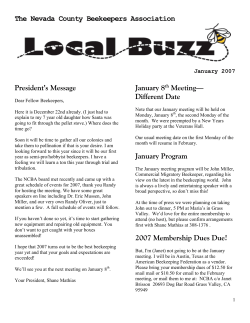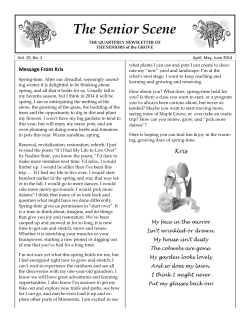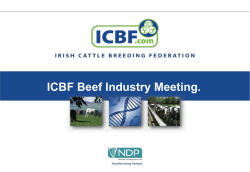
Clyde Monitor Farm Andrew Baillie Carstairs Mains, Carstairs
Clyde Monitor Farm Andrew Baillie Carstairs Mains, Carstairs Report from Meeting held on the 21st May 2014 FUTURE EVENTS Next Clyde Monitor Farm Meeting Wednesday 6th August Useful Contacts Andrew Baillie Robert Gilchrist, QMS Technical Projects Officer Grant Conchie, SAC Consulting Facilitator Raymond Crerar, SAC Consulting Facilitator 01555 870741 0131 4724040 01555 662562 01292 525252 Useful Web Addresses QMS SGRPID SAC Consulting www.qmscotland.co.uk www.scotland.gov.uk www.sac.co.uk The Clyde Monitor Farm is supported by the Scottish Government Skills Development Scheme and Quality Meat Scotland Contents Introduction ........................................................................................................................... 1 Aim of the Project .................................................................................................................. 1 Aims of the tenth meeting ..................................................................................................... 1 Update from Previous Meeting .............................................................................................. 1 Biomass ............................................................................................................................ 1 Ewes ................................................................................................................................. 1 Suckler Cows .................................................................................................................... 2 Bull Beef ............................................................................................................................ 2 Crops/Grass ...................................................................................................................... 2 My Farm- John Mitchell, Hazelside ....................................................................................... 3 Chicoy Trial ........................................................................................................................... 5 Sheep Topics – Maximising lamb growth rates ..................................................................... 6 Key Points ......................................................................................................................... 6 Lamb Health ...................................................................................................................... 6 Grazing Management ........................................................................................................ 7 Creep Feeding................................................................................................................... 8 Shearing Management ...................................................................................................... 8 Weaning ............................................................................................................................ 8 Bull calves - To CUT OR NOT TO CUT? .............................................................................. 9 An Introduction to Rotational Grazing.................................................................................... 9 Grassland Management .................................................................................................. 10 Calculating Supply and Demand for Cattle ...................................................................... 11 Rules of Thumb and Key Points ...................................................................................... 12 Rotation Grazing at Carstairs Mains ................................................................................ 13 Beef and Sheep Outlook ..................................................................................................... 14 Date of Next Meeting .......................................................................................................... 14 INTRODUCTION Around 20 farmers and industry representatives attended the tenth meeting of the Clyde Monitor Farm at Carstairs Mains. AIM OF THE PROJECT To improve the efficiency and profitability of the Monitor Farm and other farms in the area. AIMS OF THE TENTH MEETING Revisit the Bull Beef versus Store Steers costings. Maximizing lamb growth rates. An introduction into rotational grazing and grazing management for cattle. Industry outlook for beef and sheep. UPDATE FROM PREVIOUS MEETING Andrew provided an update on what had happened at Carstairs Mains since the last meeting. Biomass The new system has been installed and has been operational since the end of February. Andrew is very pleased with the system and the way it has been installed. The boiler is currently being filled and lit once per day which is sufficient to keep the house at 23oC and to provide hot water. On the day of the meeting the system had sufficient heat that the boiler would not require to be lit. The annual feed in tariff (FIT) is predicted to be over £4,000. Ewes Lambing went exceptionally well with the ewes in good condition. Approximately 280 ewes were lambed (hoggs not tupped). A scour occurred in one of the lambing shed towards the end of lambing however treatment with Norodine tablets soon helped control the outbreak. The flock has been vaccinated for orf (ewes and lambs) and to date, no orf has been observed on the lambs. Andrew fed a 21% protein ewe roll from Davidson this year. The roll contains 15% Soya and was fed at ½ kg/head /day to the triplets from 1 month pre lambs. Twins received the cake from 1 week pre lambing and singles did not receive any cake until after lambing. John Vipond commented that feeding high levels of un-degradable protein (DUP) found in products such as Sopralin or Hi-pro soya bean meal can help to maintain the ewes immunity at lambing time when immune systems become weakened as well as improving colostrum quality and milk yield. If we can make a quality sheep silage of 11-11.5ME then no concentrate supplementation, other than Soya, is required for twin bearing ewes. The silage will supply sufficient energy for the ewes. The soya should be fed at 100grams/lamb carried per day as a general rule (e.g. Twin bearing ewes – 200g/day). A high protein source is important in the diet as the unborn lambs will put down wool in the last week of pregnancy. 1 Andrew is currently weighing lambs to obtain there 8 week weights and although he has 1 field of ewes and lambs still to mark, estimates 15-20% more lambs than last year. Currently 8 week weights of 32-33 kg have been achieved. These lambs must have been growing at an average of between 480-500 grams/day from birth. Andrew used a Charolais tup on a batch of draft ewes purchased from Calla (BDMxBF and BDMxCH) with the aim of producing a Charolais cross recipient ewe for embryo work. These ewes have lambed well and are currently running at 200% lambs. Creep feeding has been offered with the aim of getting lambs away ASAP and providing a good sized ewe lamb to tup. Suckler Cows 5 cows are still to calve. Calving has gone well, as far a calving ease and other issues go. Kale fed cattle although fitter, calved with no issues. Heifers had been getting fed Soya 8 weeks pre calving and calved well with good colostrum and plenty of milk. Crypto has been a problem again this year, but to date, with a lot of effort, only one calf has died. Calving hygiene has been improved with more straw being used. Calves are now stomach tubed with an additional 2-3 litres of colostrum (supplied from Hillhead). Calves from the Hereford cross cows are not bagged as these cows have sufficient colostrum. Crypto stricken calves are now showing good response to treatment. No benefit from Hallocure has been seen at Carstairs Mains. Calving will be held back by 4 weeks next year to calve outside at grass. The cows will still be housed after grazing on the kale and drip fed outdoors to calve down. Andrew has divided a 16 acre field into 4 paddocks with electric fence and is grazing 25 cows plus calves around the four blocks. The cows currently stay for three days in each paddock and can access 2 “buffer fields” if grazing gets tight. Bull Beef Andrew is currently experiencing problems with booking in bulls at the abattoir. To date only one batch has been sold (this time last year they were nearly all sold). Holding back calving next year may aid marketing of the beef bulls. There are bulls going away tomorrow, 10 boked in for two weeks time and a further 10 booked in for 3 weeks. The price is back significantly. Crops/Grass 64.75 ha (160 ac) of Spring Barley has been sown. 30.35 ha (75 ac) of salad potatoes have been sown (land rented out). 8.90 ha (22 ac) of Kale will be sown shortly. 4.04 ha (10 ac) of Chicory is to be sown. 4.04 ha (10 ac) will be reseeded. 17.40 ha (43ac) of 1st cut silage will be cut ASAP (hopefully in the next two weeks). 2 MY FARM John Mitchell, Hazelside, Douglas gave the group an outline of his farming operations at Hazelside and Newtonhead. Own Four Farms Hazelside, Douglas (the home farm for 130 years) was purchased from the estate 30 years ago. Newtonhead, Rigside was purchased in the 1960’s Place Farm, Rigside Rawhills, Rigsdie Sheep Flock 1,000 Blackface ewes bred pure (120% scanning). 300 four crop Blackface ewes crossed to the BFL. 700 Crossbred ewes mated to Texel and Suffolk rams. If short of Mule replacements, they keep some Texel cross Mule ewe lambs. The hill at Hazelside is fenced into four blocks and run as two flocks. The ewes are moved into a fresh block every 10 days. This has helped increase the stocking rate of the hill and improved the pasture quality. All of the ewes are scanned and lambing starts with the cross ewes on the 20th March. Twins are lambed outside with the triplets and singles indoors to aid cross fostering. Agri-environmental schemes have allowed the business to plant hedgerows and shelter belts which provide valuable lambing shelter. Hill ewes get fed blocks from January onwards. The inbye ewes receive an 18% nut from 1 month pre lambing. Singles less, triplets earlier and more as a rule. The ewes are all fluked 2-3 times per year and are wormed pre lambing. The hill ewes receive Spot On for ticks pre lambing. Lambs are drenched for worms every 34 weeks during the summer. All of the sheep on the farm are dipped in August. A second pre tupping dip for the ewes may be considered. Lambs are finished ASAP off grass. In the past forage rape has been grown but it was felt the lambs all finished in a group more often than not when the price was reduced. John is however considering using kale to finish some of the tail end lambs. A good indoor facility allows the later born lambs to be finished indoors on pellets. Lambs are marketed through Farm Stock and Lanark Market. All ewes are dried off on the hill post weaning. Cattle 260 mostly Lim and Sim cross cows are bulled. A move toward the Aberdeen Angus is planned and AAx replacements are being sourced from one dairy farm. These will be bulled eventually with the Simmental to provide an AAxSim cow which will be mated with Charolais bulls. Cows are vaccinated for BVD and Lepto pre turnout. All cows receive All-Trace high iodine boluses 1 month pre calving. Cows calve outdoors on the hill from May onwards and careful selection of bulls has resulted in few calving issues. Calving spread has been tightened at both ends. Calves were 70kg heavier at turnout this year compared to last. These calves are sold as 16month forward stores in October. 3 Crops/Grass Participation in agri-environment schemes restricts silage making until 1st July which the farm system has adapted to. Fields are reseeded using between 40-60acres of spring barley each year which is under sown. A 7-8 year ley is the target with a high clover content. 2kg of clover is included in the seed blend. 4 CHICORY TRIAL Andrew Baillie updated the group on the chicory at Carstairs Mains. Andrew has now experienced 3 seasons with the crop and is very impressed with the growth rate and health of the lambs and rams on the crop and the significantly lower reliance on concentrate feeding. Weeds Thistles and docks have been a huge problem (including fat hen in 2013) and fields have been topped in the past in a bid to reduce the weed burden in the crop. 2014 Trial A 4.05 hectare (10 ac) field has been burned off ploughed and cultivated ready for the chicory seed. In a bid to control the weeds, half of the field will be established as normal whilst the other half will be sown deeper than recommended with the Simba drill. Straight chicory will be sown in half of the field (clover will be broadcasted on at a later date. Chicory, crimson clover (aggressive clover strong in year 1) and a white clover (more dominant in year 2) will be sown in ¼ of the field. Some timothy will be included to balance the diet. Chicory (alternative variety), white clover and plantain (a mineral rich herb) will be sown in the remaining ¼ section. Sown at normal depth Sown deeper Straight Chicory (clover at a later date) Straight Chicory (clover at a later date) Chicory, crimson clover, whiteclover, timothy Chicory, white clover, plantain We will monitor the establishment and success of each plot and the growth rates of the livestock coming off them over the summer. 5 SHEEP TOPICS – MAXIMISING LAMB GROWTH RATES John Vipond, Sheep Specialist with SAC Consulting lead the discussion on getting lambs off to the best start and maximising their growth rate at grass. For this session we visited a field of 65 crossbred ewes (Bleu du Maine cross BF and Cheviot) running at 188% with Charolais cross lambs at foot. There were also 10 heifers in this 6.48 ha (16ac) field. The sward was leafy at 10 cm in height with an average clover content. Key Points Lamb growth rate is effected by two main factors; o The health of the lambs o The quality of the grazing To maintain grass quality through to July and August ensure the sward height is 4-6 cm in May (sheep pastures). Avoid unnecessary stresses where possible and particularly at weaning. An average lamb daily live weight gain of 200-350 grams is considered very good (by New Zealand standards). Over 350 grams/day is excellent. An average growth rate of less than 200grams per day is improvable. Lamb growth rates in excess of 300 grams per day can be achieved on swards containing red clover. It is important to remember to keep ewes off of red clover swards for 45 days either side of tupping due to the phyto-oestrogen content. Rams grazed on red clover swards may have elongated vestigial teats. A planned proactive sheep heath policy is key to maximising performance and lamb growth rates. Pre (and post drenching) Faecal Egg Counting is a useful tool to plan a control strategy, eliminate unnecessary drenches, reduce workload where possible and importantly maintain efficacy of anthilmintics. Lamb Health Mastitis although not a major issue at Carstairs Mains, had been an issue for many of the group. It is linked to dirt and Pasturella and can be reduced by belly clipping and fan crutching ewe’s pre lambing to remove dirt and faeces. Some breeds seem more prone to mastitis than others particularly where they have been bred for teat size and position. Orf can severely hinder lamb growth. The orf virus enters sheep through a prick wound (gorse, thistles, feeding troughs) and can live in the base of rams horns. Vaccinate only if orf is present in the flock. As it is a live vaccine you will risk introducing orf if it isn’t currently a problem. Previously at Carstairs Mains ewes were vaccinated pre lambing and then the lambs shortly after birth. Now both ewes and lambs are vaccinated post lambing to provide longer cover. Scald can quickly pull lambs down. If “hoppy” walk through a footbath containing a 3% Formalin solution. Formalin concentration of over 5% can cause severe irritation of the inter digital skin. Alternatively stand sheep in a foot bath of 10% zinc sulphate solution. This process may need to be repeated weekly in the event of an out-break. Useful tip. If stock are not entering the footbath, scatter some clean straw in it. This will greatly aid throughput and reduce splashing. 6 Worms have been controlled in the flock by treating the ewes with Zermex injection pre lambing (also acts as a routine treatment for scab). The lambs have already been treated with cydectin which coincide with their first Heptavac-P Plus vaccine to combat clostridial diseases (the ewes receive a booster vaccine 4 weeks pre lambing). The lambs will now be closely monitored for worms using a Faecal Egg Count and will be dosed accordingly. John Vipond mentioned that if you were experiencing a lot of rotten lambs at lambing time, you may wish to consider moving to a 10 in 1 vaccine (Bravoxin 10) to combat Clostridium Sordellii. Fluke can be continually present on some farms. A late spring/early summer drench is beneficial to take out any adult fluke that may be present in the liver. Select a flukicide that specifically targets adult fluke. Andrew drenches his ewes twice per year and fluke does not appear to be a major issue at Carstairs Mains. Faecal egg counts can be taken to test for fluke presence however it is the adult fluke that shed eggs and conversely it is the high occurrence of immature fluke that cause acute symptoms and death. John Vipond suggested that it is useful to base treatment decisions on the National Animal Disease Information Service (Nadis) Website below: www.nadis.org Coccidiosis is a protozoan infection effecting young lambs predominately 6 – 8 weeks old. After this age the lambs build up a natural immunity to the infection. Coccidia build up inside the lambs and infected animals can be seen straining often with blood on their dung. Lambs can be drenched with Vecoxan or Baycox with two drenches often being required. Feed treated with coccidiostats can suppress the infection however it prevents the lambs from building up their own immunity therefore it is advised to break the feed treatment to allow the lambs to be exposed to Cocci for a two weeks. None of the community group present treated lambs for cocci. Grazing Management Target sheep grazing at 4-6cm height in May to prevent seed head formation and a reduced quality long stemy grass in July-August. Leafy grass to the bottom of the sward is ideal. Following four days of phenomenal grass growth, the group felt that the grass in the field was getting away from the ewes and was slightly longer than ideal at nearer 10cm. The group decided that more cattle should be added to the field to help take the sward height it down a bit. The worm burden of a field was discussed and the issues with grazing fields down too hard, nearer the worm larvae. John Vipond informed us that the worm larvae is in the bottom 2cm of the sward therefore it is best to get the ewes to eat off the excess sward now. This way, the lambs will be buffered from worm infection as they are still taking a significant amount of milk from their mothers. Use the ”pinch and pluck test” to evaluate your grazing. If it is 4-6 cm and mostly green leaf (not dead material or stems) you should manage 280-300grams per day lamb growth. 7 Creep Feeding Should lambs get creep fed? – Only if you can get them away early at a premium and before the glut of lambs appears on the market otherwise it is probably not worth the additional cost. If creep feeding, introduce creep when lambs are at the playful stage and are inquisitive enough to take creep from the feeders. Later introduction is less successful. Creep is best fed pre weaning when the lambs feed conversion is at its highest. As a rule this is 5:1 pre weaning (5 kg creep feed= 1 kg lamb growth). This efficiency decreases post weaning to 8-9:1 (8 or 9 kg feed = 1 kg lamb growth). Shearing Management Shearing management is important and often overlooked. You must be vigilant not to take ewes and lambs from clean grass and expose them to the “dirty” pasture of holding paddocks. Avoid this if possible. Always empty ewes out pre shearing as they will be more comfortable and less stressed during the shearing process. Deaths can occur if clipping when sheep are full of grass. Avoid the stresses of an unnecessary second gather by doing a Faecal Egg Count pre shearing to check if the lambs need dosed whilst gathered for shearing. Post shearing, the daily feed intake of ewes and hoggs will increase by up to 15%. Hoggs can grow at 180-200grams/day post shearing as their intake increases. Weaning Weaning is a very stressful time for lambs (and ewes) and if poorly managed can cause serious lamb growth checks. To reduce the weaning check, wean lambs back onto their familiar pasture where they know where shelter and waters are. Do a pre wean FEC to establish whether a worm dose is required or not. The lambs when stressed will be more susceptible to the effects of a worm burden. Moving the ewes well away from the lambs is the best option as just running them in a neighbouring field can prolong the weaning process and acclimatisation. Post weaning, ewes will produce milk whether or not on water. Give them access to water to reduce the stress at this time. Condition score the ewes at weaning and use the fitter ewes as grass toppers (mobs of 80 ewes per acre) and graze down hard to improve sward quality and composition for tupping. 8 BULL CALVES – TO CUT OR NOT TO CUT? After a request by one of our community group members we revisited the bull beef verses store steers costings in light of the declining beef price. At our 6th Monitor Farm Meeting (6th November 2013) we calculated the cost benefit of keeping the beef bulls entire and finishing them intensively against the alternative of castrating them and selling them as stores. At that meeting the decision was unanimous; Andrew should continue to finish these beef calves as bull beef. At the time after making adjustments for recent sale prices the margins after forage were £174/head v’s £141/head in favour of the bull beef. Adjusting the finished beef price to a June 2014 price of £3.50/kg has reduced the potential margin after forage of the beef bulls to £55/head. This compares less favourably to the £97/head margin of selling store steers. In hindsight, the bulls would have of been better castrated and sold as stores. The costing’s for November 2013, May 2014 and June 2014 are attached. AN INTORDUCTION TO ROTATION GRAZING Aidan Murray and Adam Woods, Teagasc Grassland Beef Specialists from Ireland joined us for the meeting and lead an informative and thought provoking session on rotational grazing. They informed us how the Irish farmers calculate grass availability and match this with stocking rates. Key Points Cattle will eat 2% of their liveweight in Dry Matter per day A ewe with twins requires 4.5% of her liveweight in Dry Matter per day. For cattle, graze grass from 10 cm to 4 cm and move on. Each cm in grass growth is equal to 250kg/DM/ha. Ideally grow grass for 3 weeks and eat over 3 days to avoid eating regrowth. Leaving the correct residual sward height is key to ensuring lush green regrowth. Rotational grazing allows an increased stocking rate (an additional 1.2 cows plus calves per hectare at Carstairs Mains). A weekly grassland measuring walk will give an early indication of growth and when fields can be shut off for silage. Background to the Better Farm Programme and rotational grazing in Ireland. The Better Farm programme in Ireland is targeted at suckler beef producers (ranging from 40-130 cow herds) with the main aim of improving the Gross Margin on these farms to 1,000 euros/ha (£830/ha). Land availability is the main limiting factor in Ireland so it is of paramount importance that every hectare is as productive as possible. The existing average GM on Irish suckler farms was 300 euros/ha (£249/ha). Farmers were selected for the programme based on their attitude to change and their willingness to improve efficiency and improve their business. Once selected, the farms are grouped at eight per advisor. Their own specific advisor will then work closely with them and will analyse a variety of on farm records and data. 9 The advisors (and vets) have access to slaughter reports, calving and breeding data and death records on each farm via the Herd Plus system. A weighing service was organised to establish the DLWG of the cattle. All costs were monitored with particular attention paid to Gross Margin – the best indicator of technical efficiency on the farm – rather than Net Margin. A three year plan was draw up of how to improve profits on each farm. To date the programme has helped improve the GM/ha on each farm, ranging from 360-851 euros GM/ha before subsidy. Three farmers exceeded a GM of 1000 euros/ha – before subsidy. The main changes made on each farm were o Reduce calving spread o Improve output (not necessarily cut costs) o Improve grassland management – this was the key area to cut costs and drive performance. The farmers in the programme all now walk their farm on a Monday morning and measure pasture covers. At first they were sceptical about this “wasted time” but all of the farmers are now unanimous in the feeling that this is the “most important job of the week”. Grass covers are inputted into a computer programme (the internet based – Pasture Base Ireland) and the farm feed availability is calculated and budgets worked out using daily intakes for the stock on the farm and stock numbers. Grassland Management May is the most critical month in the grassland management calendar and matching grass supply with demand is key “get it wrong in May and you will chase your tail for the rest of the year!”. April, May and June (on most farms) are the months of peak grass growth and it is critical to match demand with supply at this time allowing areas of the farm to be shut off for silage whilst increasing the grazing pressure on other areas from April onwards. During these peak months, the grazing area should be stocked at its highest. The table below converts the growth rate of a paddock into a stocking rate. During periods of low utilisation or wet weather use the lower figures. Daily 20 Growth (kgDM/ha) Kg/LW/ha 700- 30 40 50 60 70 80 1000- Kg/LW/ac 420-600 14002000 560-800 17502500 7001000 21003000 8501200 24503500 10001400 28004000 11001600 280-400 How Much Grass is in a Paddock? Often farmers take little notion of grass supply and demand until there is an urgent shortage and they need to take immediate action. Grass can be measured by a number of ways, plate meter, measuring stick, ruler, weighing, marks on your wellie, golf ball, eye balling it etc. The most important thing to do is walk your grass weekly. 10 As a rule of thumb; 1 cm of pasture height = 250 kg DM/ha As a rule for cattle, their daily dry matter intakes are based on 2% of live weight. E.g. A 450kg store will eat 9 kg DM/grass/day. A ewe with twins requires a daily dry matter intake of 4.5% of her live weight. E.g. A 75kg cross ewe will eat 3.4 kg DM/grass/day. Calculating Supply and Demand for Cattle If grass height at entry is 10 cm and we will graze down to 4 cm = 6 cm available. 6 cm x 250kg/DM/cm = 1,500 kg DM/ha available Field size 1.0 ha therefore 1,500 kg DM available to be grazed. 40 store cattle in group (450kg LW) = 9kg DM/head/day x 40 = 360kg/DM/day required. 1,500kg/DM divided by 360 kg DM/ day = 4 grazing days available in this paddock. The table below is a ready reckoner for converting grass height in cm into kilograms of utilisable grass/ha (cattle grazing); Grass 4cm Height Utilisable 0 Cover (kg/ha) Too light, fertilise or delay grazing 6cm 8cm 10cm 12cm 14cm 16cm 500 1000 1500 2000 2500 3000 Too light, fertilise or delay grazing Too light, Ideal fertilise Open or delay gate grazing Too strong – close for silage Too strong – close for silage – Too strong – close for silage or mob stock cattle to reduce mass Management Paddocks with over 2,000 kg/DM/ha available or over 12cm of grass is too far on for efficient grazing. The high stem content will reduce the quality and result in poor growth rates. Grazing this paddock tight enough will be difficult and may result in poor utilisation. If grazed insufficiently, this paddock will need to be topped to take out stem and improve quality. Baling this paddock for silage will allow it to come back in to the next grazing rotation. Cutting and baling at this stage will result in a fast recovery as there is more leaf present than on a normal “stubbly” silage aftermath. Problems may arise in trying to get a silage contractor to come for a small area, particularly during peak times. 11 Paddocks with 1,400-1,700 kg DM/ha available or between 9.5cm and 11.5cm of grass is the maximum cover that is required in the rotation (for optimum cattle growth rates). If you have plenty of stock to utilise this, then there will be no problem. If you are lower stocked then you may wish to skip this paddock and close it up for silage making. Paddocks with 1,000-1300 kg DM/ha on lower stocked farms will be more beneficial however grazing low pasture covers should be avoided as this can suppress grass growth and slow down the rotation. Rules of thumb and key points Denser sheep swards will have a higher DM/ha than cattle pastures at similar vegetation heights. The feed availability in Ireland is calculated as “grazing days ahead” If there are too many grazing days ahead then paddocks are shut for silage, if too little, then fertiliser is applied or stock sold. At this time of year (high pasture growth rates) 15 grazings days ahead is adequate, at the end of August 30 days ahead are required to provide grazing until October. Each year the productivity of a paddock/field can be assed. This can vary from 7tDM/ha to 14tDM/ha. Underperforming blocks can be soil sampled, fertilised, limed or reseeded as required. Graze grass down to 4 cm. This is the target residual cover and is the key to a quality pasture and lush regrowth. It is important to clean out pasture covers and ensure leaf growth. May is the key month to keep the grazing pressure on and guarantee quality grass for the rest of the year. The ideal rotation length in May (peak grass growth) is 20 days. The ideal grazing pattern is to eat a paddock over 3 days and then rest the paddock for 3 weeks before re grazing. In a rotational grazing system, adding 150 kg LW onto a beast is easily achievable, adding 200 kg is excellent. If grazing cows with calves at foot, the forward grazing of calves under a creep wire is a good policy. The higher horse electric fence poles can be used as a creep gate. Calves can then be fed creep feed in troughs on the other side of the wire. A spring calving suckler cow should never taste concentrate feeding. On a grass based system, you should ideally match the peak grass supply with the peak demand. For example calf down 1 month pre turnout. October is the start of any grass management year for cattle as the grass grown from October to November will be there in the spring (in most years). Shutting select fields up in October is key to an early turnout. Spreading slurry does not spread docks as the seed is most likely to be killed during fermentation of silage. The high Potash content of the slurry is however conducive to dock growth and they will thrive in a high K soil which has also been disturbed. Reseeding is the time to kill docks and an increasing number of Irish farmers are now sowing grass seed mixtures without clover. This allows a more flexible weed control strategy and clover can be established by stitching in at a later date or into silage stubble providing it isn’t too dry a summer. Nitrogen reduces the activity of clover, in effect making it lazy as it doesn’t need to fix its own nitrogen. 12 Carstairs Mains Rotational Grazing Andrew had divided a 6.48ha (16 acre) field into four paddocks using a single strand temporary electric fence. The positioning of the fence around the water toughs was altered depending on which paddock the cows and calves were in. An additional two small fields were available for grazing should they be required. Each was 1 ha (2.5ac) in size. The split field had received 57 kg/ha of urea (46 units/ac) and had been grazed with sheep until February. The 25 cows plus their calves were currently on their 3rd rotation around the paddocks and had been moved the morning of the meeting. Andrew had previously been concerned about a lack of grass coming forward so had utilized a spare buffer paddock to reduce the pressure on the 4 main grazing paddocks in the rotation. In hindsight Andrew felt he should not have brought in the additional paddock as the grass growth kept up with demand and there is now too much grass in the rotation for the current stock. This highlighted the importance of calculating the grass growth and the number of grazing days ahead. The group felt there was too much residual grass left in the last paddock (2 days grazing remaining) and that there were approximately 20 days grazing ahead. Rather than shut a small area up for silage, it was agreed that Andrew would bring in 10 heifers to graze off the residual down to 4 cm ASAP over the next two days to avoid eating off the re growth. Rotational grazing had allowed Andrew to increase his stocking rate to 1.5 cows plus calves per acre. Traditionally this would have been 1 cow and calf per acre meaning an additional 9 cows plus calves are running on the 16 acre field. 13 BEEF AND SHEEP OUTLOOK Kev Bevan, SAC Economist was present at the meeting and provided the group with an industry outlook for the beef and sheep sectors. Key Point We are limited in what we can do about the price of beef and sheep meat, achieving more from our grass/forage is key to reducing farm level costs. Beef has significantly benefited over the past 12 months as a result of the horse meat scandal but has now slipped to a current base price of 355p/kg (in comparison the Irish price is 320pence/kg). Other factors affecting the beef price are chicken becoming more competitive due to cheaper grain, a big consumer move towards mince, also sausages become more gourmet therefore competing for a larger share of the meat protein market. Hopefully we are now near the bottom of the price slump although we are unlikely to bounce back to 400p/kg. A price of 380p/kg by October was pitched by one member of the group. The sheep industry has had a more successful lambing this year and the national flock is at an acceptable level, although looking forward we do not want many more sheep in system. The exchange rate will be the main concern. The sector must produce a product that is competitive and can be priced similar to the other proteins. In the eyes of the consumer, sheep meat is currently too expensive. The Chinese are increasing the sheep meat consumption however this is becoming more focused on mutton. DATE OF NEXT MEETING The next Clyde Monitor Farm meeting will take place on Wednesday 6th August. 14 Bull Beef vs Store Costings – November 2013 BULL BEEF STORE STEERS Head Mortality Reared 30 4% 29 Start Date Sale Date Feeding Period (days) Head Mortality Reared 01/11/13 16/05/14 196 Starting Weight DLWG Finished Weight Killing Out Deadweight Start Date Sale Date Feeding Period (days) 300 1.58 610 55% 335 01/11/13 30/04/14 180 Starting Weight DLWG Sale Weight OUTPUT 300 1.00 480 OUTPUT Kg 335 300 £/kg 4.10 2.50 £/Head 1,320 750 570 £ 39,595 22,500 17,095 Kg 1,667 333 266 800 £/tonne 125 270 60 60 £/Head 208 90 16 48 13 10 10 1 397 £ 6,251 2,697 479 1,440 390 300 312 35 11,905 GROSS MARGIN 173 5,190 GROSS MARGIN FORAGE COSTS Silage 0 0 FORAGE COSTS Silage 173 5,190 Sales Less Transfers In TOTAL OUTPUT 30 2% 29 No. 29 30 VARIABLE COSTS Rolled Barley Protein Balancer Straw - Feeding Straw - Bedding Vet & Med Haulage Commission & Levies Miscellaneous MARGIN AFTER FORAGE 1375 Sales 750 Less Transfers In TOTAL OUTPUT No. 29 30 VARIABLE COSTS Rolled Barley Protein Balancer Straw - Feeding Straw - Bedding Vet & Med Haulage Commission & Levies Miscellaneous MARGIN AFTER FORAGE 15 Kg 480 300 £/kg 2.50 2.50 £/Head 1,176 750 426 £ 35,280 22,500 12,780 Kg 432 108 £/tonne 125 270 800 60 £/Head 54 29 0 48 13 10 46 1 202 £ 1,620 875 0 1,440 390 300 1,394 35 6,054 224 6,726 89 2,678 135 4,049 3,570 25 Bull Beef vs Store Costings – May 2014 BULL BEEF STORE STEERS Head Mortality Reared 30 4% 29 Start Date Sale Date Feeding Period (days) Head Mortality Reared 01/11/13 16/05/14 196 Starting Weight DLWG Finished Weight Killing Out Deadweight Start Date Sale Date Feeding Period (days) 300 1.58 610 55% 335 01/11/13 30/04/14 180 Starting Weight DLWG Sale Weight OUTPUT 300 1.00 480 OUTPUT Kg 335 300 £/kg 3.65 2.25 £/Head 1,175 675 500 £ 35,249 20,250 14,999 Kg 1,667 333 266 800 £/tonne 125 270 60 60 £/Head 208 90 16 48 13 10 10 1 397 £ 6,251 2,697 479 1,440 390 300 312 35 11,905 GROSS MARGIN 103 3,095 GROSS MARGIN FORAGE COSTS Silage 0 0 FORAGE COSTS Silage 103 3,095 Sales Less Transfers In TOTAL OUTPUT 30 2% 29 No. 29 30 VARIABLE COSTS Rolled Barley Protein Balancer Straw - Feeding Straw - Bedding Vet & Med Haulage Commission & Levies Miscellaneous MARGIN AFTER FORAGE 1224 Sales 675 Less Transfers In TOTAL OUTPUT No. 29 30 VARIABLE COSTS Rolled Barley Protein Balancer Straw - Feeding Straw - Bedding Vet & Med Haulage Commission & Levies Miscellaneous MARGIN AFTER FORAGE 16 Kg 480 300 £/kg 2.25 2.25 £/Head 1,058 675 383 £ 31,752 20,250 11,502 Kg 432 108 £/tonne 125 270 800 60 £/Head 54 29 0 48 13 10 42 1 197 £ 1,620 875 0 1,440 390 300 1,254 35 5,914 186 5,588 89 2,678 97 2,910 3,570 25 Bull Beef vs Store Costings – June/July 2014? BULL BEEF STORE STEERS Head Mortality Reared 30 4% 29 Start Date Sale Date Feeding Period (days) Head Mortality Reared 01/11/13 16/05/14 196 Starting Weight DLWG Finished Weight Killing Out Deadweight Start Date Sale Date Feeding Period (days) 300 1.58 610 55% 335 01/11/13 30/04/14 180 Starting Weight DLWG Sale Weight OUTPUT 300 1.00 480 OUTPUT Kg 335 300 £/kg 3.50 2.25 £/Head 1,127 675 452 £ 33,801 20,250 13,551 Kg 1,667 333 266 800 £/tonne 125 270 60 60 £/Head 208 90 16 48 13 10 10 1 397 £ 6,251 2,697 479 1,440 390 300 312 35 11,905 GROSS MARGIN 55 1,646 GROSS MARGIN FORAGE COSTS Silage 0 0 FORAGE COSTS Silage 55 1,646 Sales Less Transfers In TOTAL OUTPUT 30 2% 29 No. 29 30 VARIABLE COSTS Rolled Barley Protein Balancer Straw - Feeding Straw - Bedding Vet & Med Haulage Commission & Levies Miscellaneous MARGIN AFTER FORAGE 1174 Sales 675 Less Transfers In TOTAL OUTPUT No. 29 30 VARIABLE COSTS Rolled Barley Protein Balancer Straw - Feeding Straw - Bedding Vet & Med Haulage Commission & Levies Miscellaneous MARGIN AFTER FORAGE 17 Kg 480 300 £/kg 2.25 2.25 £/Head 1,058 675 383 £ 31,752 20,250 11,502 Kg 432 108 £/tonne 125 270 800 60 £/Head 54 29 0 48 13 10 42 1 197 £ 1,620 875 0 1,440 390 300 1,254 35 5,914 186 5,588 89 2,678 97 2,910 3,570 25
© Copyright 2025





















